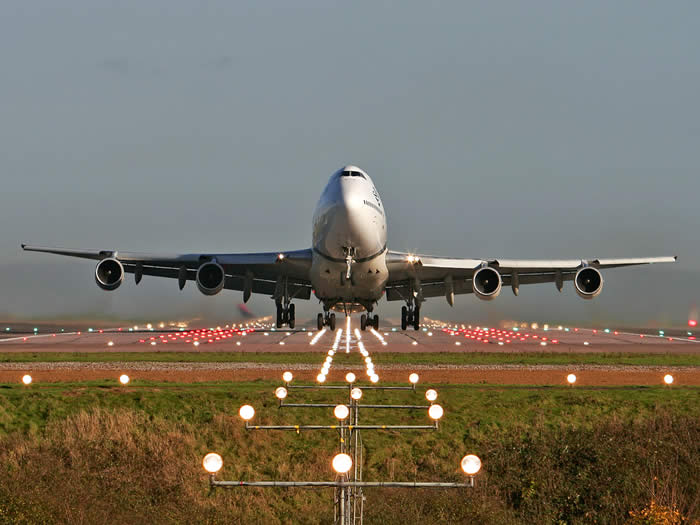The aviation security market has evolved in response to new threats faced by the aviation industry. The tragic events of September 11 2001 led to a necessity to re-examine existing airport security systems and technologies. More than a decade on, new legislation has been adopted, regulatory authorities established and additional equipment installed at airport facilities throughout the world. As demand for air travel continues to grow year on year, governments and aviation enforcement authorities face the need to adopt strict safety measures that will counter terrorist threats before they occur whilst limiting the inconvenience faced by the passenger. Existing threats, rising passenger numbers and airport expansion projects mean that the global aviation security market will reach $22.3 billion in 2012.
The prevailing economic conditions faced by North America and Europe have meant that projected sales forecasts are restrained. However the impact of these economic constraints to the overall aviation security industry will be limited in the longer term as safety and security continue to remain a priority. Upgrades to existing security features and investment in R&D will help to maintain steady growth in these markets.
Elsewhere, growth within Asian aviation security markets such as China and India is forecast to be significant, while in the longer term, Middle Eastern spending on aviation security is expected to increase sharply to meet the demand for new technology systems.
Unique Points
- Comprehensive analysis of the prospects for the aviation security market from 2012-2022.
- Analysis and forecasting informed by extensive expert consultation with industry leaders. You will be able to read full transcripts of interviews from 2 leading companies involved within the aviation security market.
- 141 tables, charts and graphs that quantify, analyse and forecast the changing dynamics of the aviation security market between 2012-2022
- Forecasts and analysis for the global aviation security market between 2012-2022
- Forecasts and analysis for 4 submarkets of the aviation security market from 2012-2022.
- Forecasts and analysis for 6 regional aviation security markets for the period 2012-2022.
- Forecasts and analysis for 17 national aviation security markets for the period 2012-2022.
- Analysis of the drivers and restraints of the aviation security market.
- Profiles of 36 leading companies operating within the aviation security market.
Methodology
This report has been compiled by combining information obtained from a very wide and rich mixture of primary and secondary research sources, producing a broad industry overview. We sought opinions from leading figures in the aviation security market to underpin the analysis of market drivers and restraints.The study draws on a diverse range of official corporate and governmental announcements, media reports, policy documents, industry statements and expert opinion as a basis for discussing and predicting developments in the aviation security market between 2012 and 2022.
We consider that this methodology results in an accurate, objective mixture of analyses and forecasts.
Why you should buy The Aviation Security Market 2012-2022
You will receive a comprehensive analysis of the aviation security market from 2012-2022
The analysis and forecasting has been informed by extensive expert consultation with industry leaders. Within the report, you will be able to read full transcripts of interviews from 2 leading companies involved within the aviation security market.
– Human Recognition Systems (HRS)
– UNISYS
You will find 141 tables, charts, and graphs that quantify, analyse and forecast the aviation security market from 2012-2022
You will receive forecasts and analysis of the global aviation security market between 2012-2022
You will find forecasts and analysis of 4 aviation security submarkets over the period 2012-2022
– Passenger and Baggage Screening
– Perimeter and Access Control
– Digital Surveillance
– Biometrics
Forecasts and analysis for 6 regional aviation security markets for the period 2012-2022.
– North America
– Asia Pacific
– Europe
– Middle East
– Australasia
– Africa
You will be presented with forecasts for the 17 leading national aviation security markets, as well as rest of the world figures and projections for the period 2012-2022
– USA
– Canada
– China
– India
– Japan
– South Korea
– Singapore
– Hong Kong
– UK
– France
– Italy
– Spain
– Saudi Arabia
– United Arab Emirates
– Israel
– Australia
– Brazil
You will receive a SWOT analysis that examines the aviation security market from 2012-2022
You will gain profiles of 36 leading companies operating within the aviation security market
What is the structure of the report?
- Chapter 1 is the Executive summary.
- Chapter 2 of this report provides an introduction to the aviation security market.
- Chapter 3 includes analysis of the forms of aviation security technologies, technical characteristics and technological developments in aviation security equipment.
- Chapter 4 offers an overview of the global aviation security market. The chapter provides sales forecasts and analysis of growth over the period 2012 to 2022 for the global aviation security market, as well as the submarkets.
- Chapter 5 focuses on 6 regional and 17 national aviation security markets. The chapter includes details of significant developments, contracts, and accompanying spending forecasts for the period 2012 to 2022.
- Chapter 6 provides a SWOT analysis, discussing the main strengths, weaknesses, opportunities and threats to the aviation security market.
- Chapter 7 features two interviews from leading companies within the field of aviation security
- Chapter 8 includes the outline and profile of 36 leading companies operating within the aviation security market.
- Chapter 9 is a summary of the report, outlining the conclusions of the analyses.
- Chapter 10 is a glossary of acronyms used in the report.










